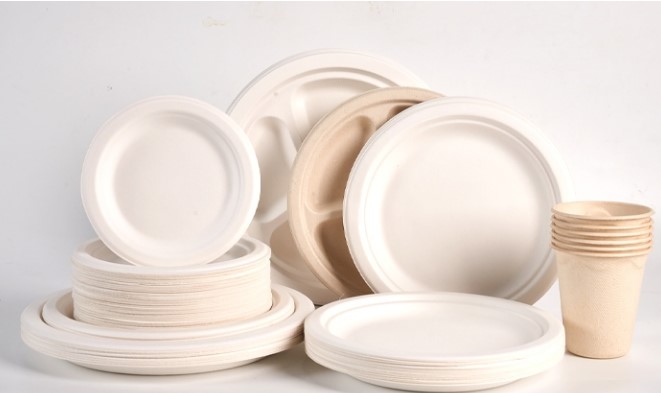
Sustainable practices are becoming a priority in the food service industry, and bagasse tableware is gaining popularity as an eco-friendly alternative to plastic and Styrofoam. Bagasse is a byproduct of sugarcane processing, making it a renewable and biodegradable material. Here are seven key benefits of using bagasse tableware in everyday life and business settings.
1. Eco-Friendly and Biodegradable
One of the biggest advantages of bagasse tableware is its eco-friendliness. Unlike plastic, which takes hundreds of years to decompose, bagasse products break down naturally within a few months under composting conditions. This reduces landfill waste and lowers environmental pollution. Businesses looking to make sustainable choices can partner with a disposable tableware exporter to ensure they source high-quality, biodegradable tableware.
2. Renewable Resource
Bagasse is derived from sugarcane pulp, a byproduct of sugar production. Since sugarcane is harvested annually, bagasse plates and containers are made from a readily available, renewable resource. Unlike petroleum-based plastics that rely on finite fossil fuels, bagasse utilizes agricultural waste, making it a more sustainable choice. This process also helps reduce the overall carbon footprint associated with disposable tableware production.
3. Sturdy and Durable
Despite being made from plant fibers, bagasse tableware is surprisingly strong and durable. It can withstand heat, moisture, and grease, making it suitable for both hot and cold food. Bagasse plates are resistant to soaking and breaking, unlike paper plates, which often become flimsy when wet. This durability ensures a reliable dining experience for customers and guests.
4. Microwave and Freezer Safe
Bagasse tableware is microwave-safe and can withstand high temperatures, making it convenient for reheating meals. Additionally, it is freezer-safe, which means it can store leftovers or pre-prepared meals without losing its structural integrity. This versatility makes bagasse products an excellent choice for restaurants, catering businesses, and households that prioritize convenience and sustainability.
5. Compostable and Non-Toxic
Unlike plastic and Styrofoam, which release harmful chemicals into the environment, bagasse tableware is non-toxic and compostable. It decomposes into natural elements, enriching the soil instead of polluting it. Many municipalities encourage composting programs, and using compostable materials like bagasse plates can help divert waste from landfills and promote a circular economy.
6. Aesthetic and Versatile Design
Bagasse tableware has a natural, earthy appearance that complements eco-conscious dining experiences. It is available in various shapes and sizes, including bowls, plates, trays, and takeout containers. Whether for casual gatherings or upscale events, bagasse products offer an elegant yet sustainable solution for serving food. Their neutral tone makes them adaptable to different dining settings, from casual food trucks to high-end catering services.
7. Reduces Carbon Footprint
The production of bagasse tableware has a lower carbon footprint compared to plastic manufacturing. Since bagasse is made from sugarcane waste, it requires less energy and fewer resources to produce. Additionally, using bagasse products helps reduce reliance on single-use plastics, which contribute to global pollution. Businesses that prioritize sustainability can benefit from marketing their commitment to eco-friendly practices, appealing to environmentally conscious consumers.
Conclusion
Bagasse tableware is a sustainable, durable, and biodegradable alternative to traditional disposable tableware. With its many benefits, including eco-friendliness, sturdiness, and versatility, it is an excellent choice for individuals and businesses looking to reduce their environmental impact. Whether sourced from a disposable tableware exporter or a local supplier, integrating bagasse plates and other biodegradable options into daily operations can lead to a greener, more sustainable future.